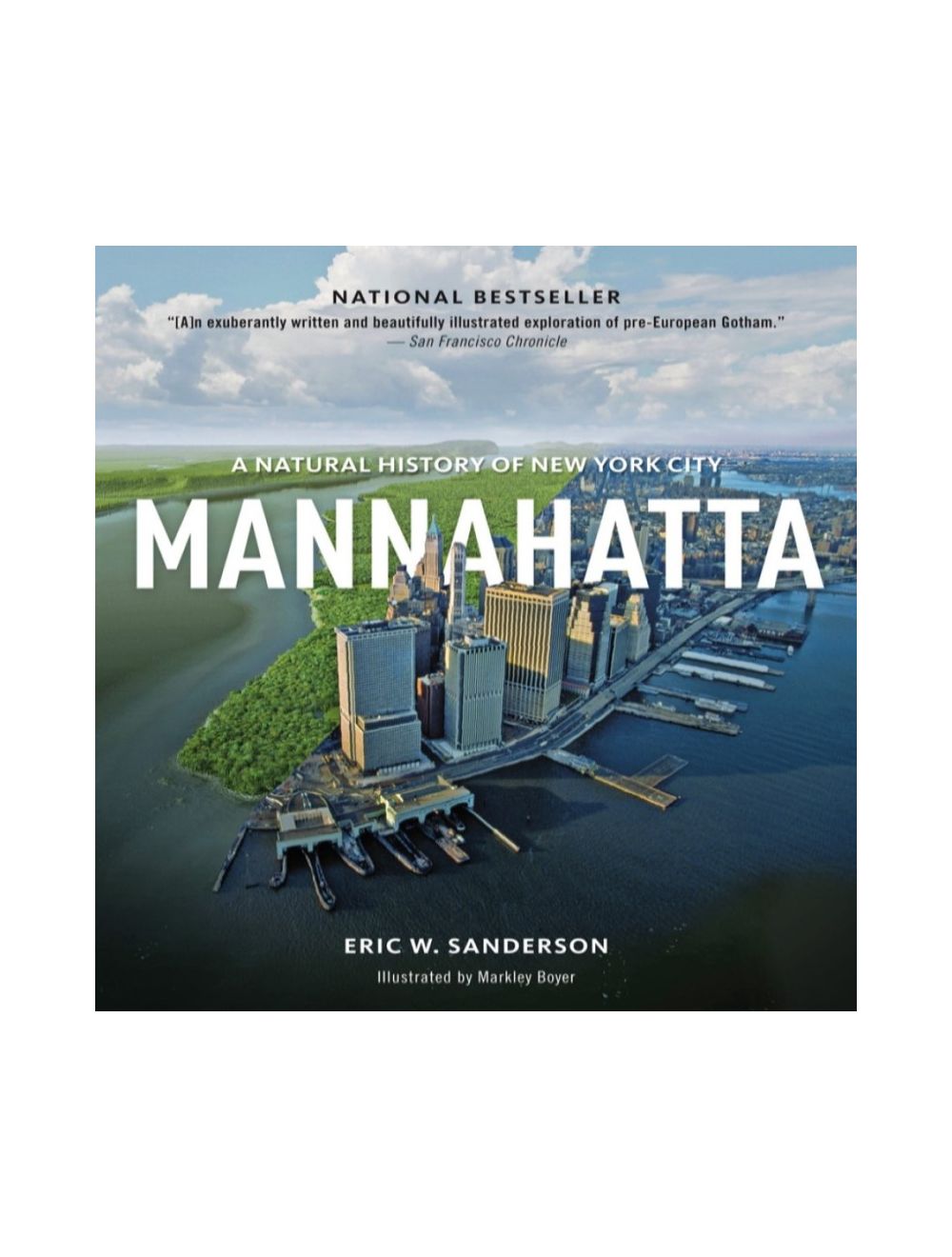Mannahatta: A Natural History of New York City
Filled with 120 full-color illustrations that show what Manhattan looked like 400 years ago, this natural history of New York City is a groundbreaking work that offers a window into the past and inspiration for green cities and wild places of the future.
What did Henry Hudson see when he first walked through the forests that would become the heart of one of the world’s greatest, most iconic cities? It’s difficult for us to imagine that world, but for more than a decade, landscape ecologist Eric W. Sanderson has been working to bring that world back to us.
In 1609, the island that is now Manhattan had more ecological communities per acre than Yellowstone, more native plant species per acre than Yosemite, more birds than the Great Smoky Mountains National Park. Manhattan was home to wolves, black bears, mountain lions, mink, and river otters. Whales, porpoises, seals, and the occasional sea turtle visited its harbor. Millions of birds of more than 150 different species flew over the island on their annual migration. Millions of fish—shad, herring, trout, sturgeon, and eel—swam past the island up the Hudson River and its stream as a rite of spring.
Sanderson’s book is the astounding result of his efforts at reconstructing in words and images the wild island that millions now call home. By geographically matching an 18th-century map with one of modern New York City, examining volumes of historic documents, and collecting and analyzing scientific data, Sanderson re-creates the forests of Times Square, the meadows of Harlem, and the wetlands of downtown. His lively text guides readers through this abundant landscape, while Markley Boyer’s breathtaking illustrations transport them back in time.
Paperback, 352 pages, 120 color illustrations
Dimensions: 7.6 X 9.8 X 1.8 inches | 3.15 pounds
About the Author
Eric W. Sanderson is a senior conservation ecologist in the Global Conservation Programs of the Wildlife Conservation Society. He is adjunct faculty member at Columbia University and New York University and has lectured at Princeton, Harvard, and Oxford universities, and at TED.





